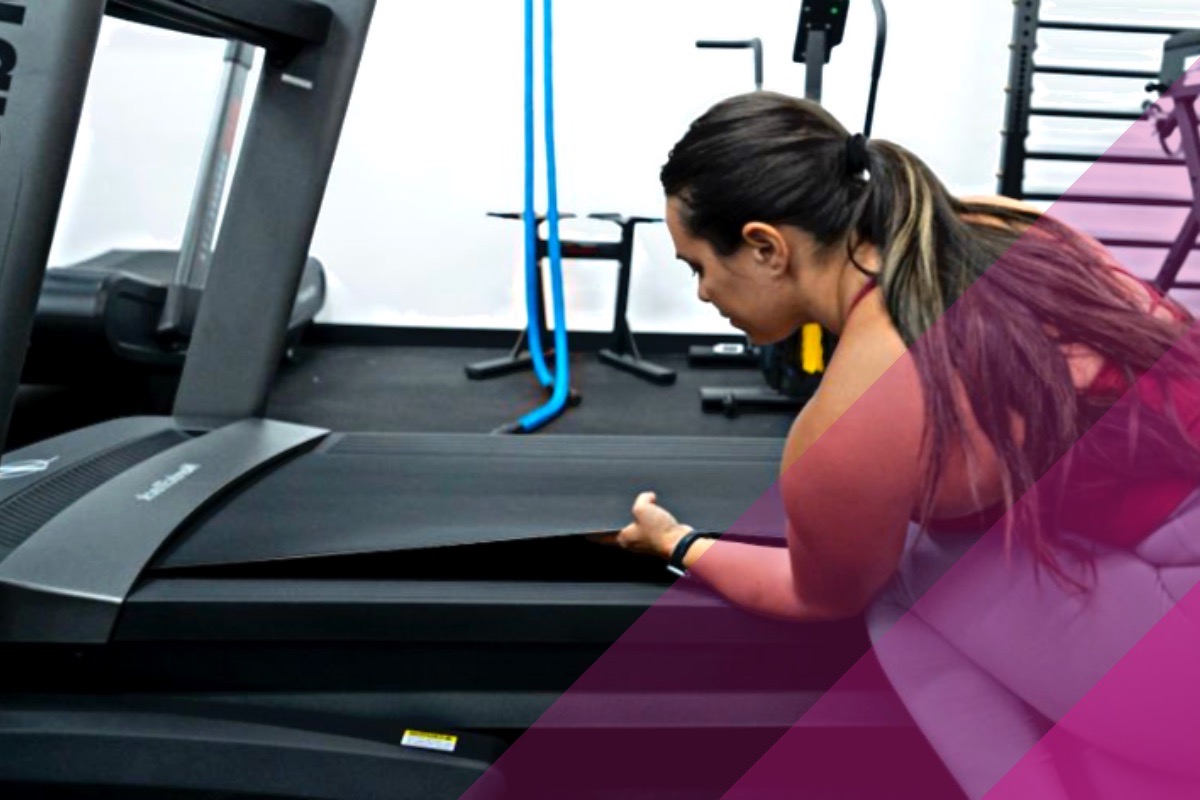
Treadmills are popular exercise machines that allow you to exercise indoors, rain or shine. However, with frequent use, the belt can become loose and cause the machine to malfunction or even create a safety hazard. In this article, we will discuss the steps to tighten the treadmill belt to ensure that you get the most out of your workout and keep yourself safe.
Now, we will brief you about the logistics that are essential. In order to tighten a treadmill belt, you will need a few tools and materials:
Allen wrench: This is used to loosen and tighten the bolts that hold the roller in place.
Screwdriver: The screwdriver helps to adjust the tension bolts.
Tape measure: To measure the distance between the belt and the deck Tape Measure is essential.
Lubricant: It is an optional choice, then again it can help keep the treadmill running smoothly.
Before tightening the treadmill belt, it is important to prepare the machine to ensure that the process goes smoothly and safely:
Table of Contents
Turn off and unplug the treadmill
First and foremost, turn off and unplug the treadmill. This will prevent any accidents and ensure that you don’t get electrocuted while working on the machine.
Remove the motor cover
This will give you access to the treadmill belt and the roller.
Check the belt for wear and tear
Inspect carefully whether the belt is damaged or torn. If the belt is damaged or worn out, it may need to be replaced instead of tightened.
Once you are done with preparing the treadmill, you can proceed with tightening the belt using the appropriate tools and following the manufacturer’s instructions.
Adjusting the Treadmill Belt Tension
Step 1: Safety First
Before you start any maintenance on your treadmill, make sure that it is unplugged. This will prevent any accidents while you are working on it.
Step 2: Locate the Adjustment Bolts
The first thing you need to do is to locate the adjustment bolts. They are usually located at the back of the treadmill and hold the roller in place. Depending on the manufacturer and model of your treadmill, there may be one or two bolts. Once you have located the bolts, you will need to use a wrench to adjust them.
Step 3: Turn the Bolts
Use a wrench to turn the bolts a quarter turn to the right. This will pull the roller closer to the front of the treadmill and tighten the belt. If your treadmill has two bolts, turn each bolt a quarter turn. It is important to turn each bolt equally to ensure that the belt is tightened evenly.
Step 4: Check the Tension
After you have adjusted the bolts, you will need to check the tension of the belt. You can do this by pressing down on the belt in the middle of the deck with your hand. There should be a little bit of spring, but the belt should not be loose or floppy. If the belt is too loose, you will need to tighten the bolts another quarter turn and check the tension again.
Step 5: Test the Treadmill
Once you have adjusted the belt, plug the treadmill back in and test it at a slow speed. Walk on the treadmill for a few minutes to ensure that the belt is properly aligned and tensioned. If you feel any slipping or see any uneven movement, you will need to repeat the process of tightening the bolts by a quarter turn until you achieve the desired tension.
Step 6: Repeat as Necessary
If the belt still feels loose or the tension is uneven, repeat the process of tightening the bolts by a quarter turn until you achieve the desired tension. It is important to not over-tighten the belt, as this can cause damage to the machine or even create a safety hazard. Always make sure the belt has a little bit of elasticity, and if you are unsure about the tension, check the user manual or contact the manufacturer.
Must Read: Check out our buying guide featuring the top 5 shock absorption treadmills that offer superior cushioning to reduce the impact on your joints and provide a comfortable workout experience.
Tips for Maintaining Your Treadmill Belt
In addition to tightening the belt, there are a few things you can do to ensure that your treadmill belt lasts longer and functions properly.
Keep the Belt Clean
Dirt and debris can accumulate on the belt over time, which can cause it to wear down faster. To prevent this, make sure to clean the belt regularly with a soft cloth and mild detergent. Avoid using harsh chemicals or abrasive materials, as they can damage the belt.
Lubricate the Belt
Lubricating the belt can reduce friction and extend the life of the machine. Check the manual to see what type of lubricant is recommended for your treadmill. Apply the lubricant according to the instructions in the manual. It is important not to over-lubricate the belt, as this can cause it too slippery and create a safety hazard.
Keep the Treadmill in a Dry Location
Moisture can damage the belt and other parts of the machine. Keep the treadmill in a dry location and avoid exposing it to moisture. If you are exercising in a humid environment, use a dehumidifier to reduce the moisture in the place.
Conclusion
Tightening a treadmill belt is a simple but important maintenance task that ensures the safety and longevity of the machine. It involves preparing the treadmill, adjusting the belt tension using the tension bolts, and testing the belt tension before securing the roller bolts and replacing the motor cover.
Once the belt is properly tensioned, tighten the roller bolts and replace the motor cover before using the treadmill again. By following these steps, you can prevent injury and damage to the machine, and keep your treadmill running smoothly and efficiently for a longer period of time.
In conclusion, tightening a treadmill belt is an essential maintenance task that ensures the safety and optimal performance of the machine. Remember to always follow the manufacturer’s instructions and safety guidelines to avoid accidents and injuries.





